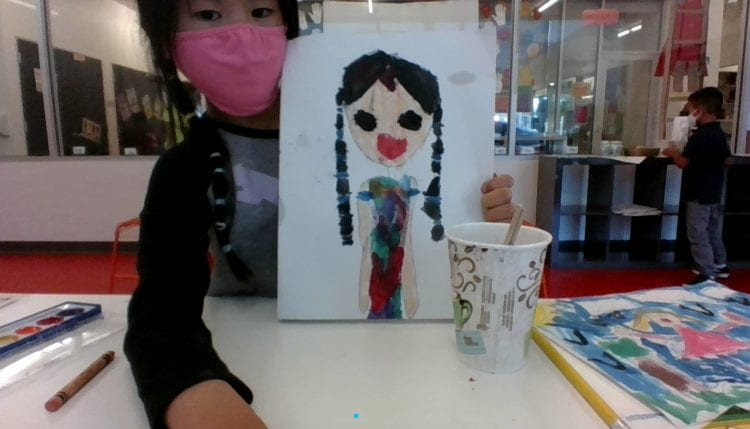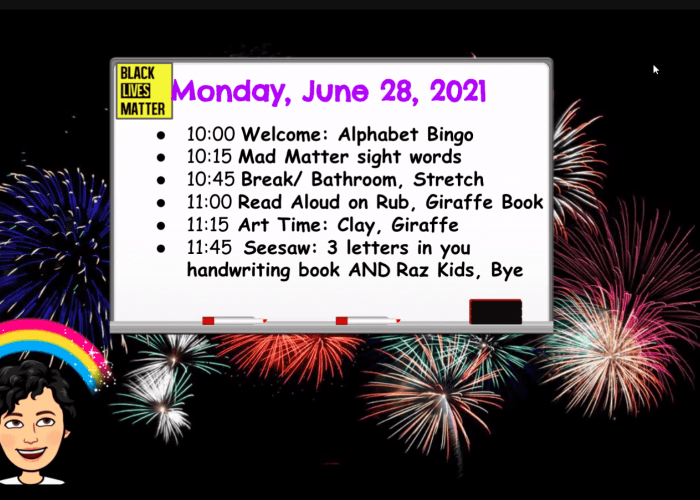
Empowering Youth through Literacy
Since its launch in 2014, Engage San Francisco has focused on building meaningful relationships with individuals, schools, nonprofits, and service providers in the Western Addition/Fillmore neighborhood. One consistent aspect of our work has been our literacy efforts. In partnership with the School of Education, we have continued to develop our shared, long-term vision to provide year-round literacy and learning support in partnership with schools and community-based programs.
In this week’s blog, we hear from Helen Maniates, Associate Professor and coordinator of the Master of Arts of Teaching Reading Program (MATR) at the University of San Francisco. MATR works in partnership with the Heart 2 Heart/Mo’MAGIC Summer Reading Program, allowing MATR candidates to connect and empower youth through reading and learning. This Q&A session highlights one of the key USF-community partnerships that addresses education inequality and summer learning loss.
1. What is the USF/Heart 2 Heart/Mo’MAGIC Summer Reading Program and its goals?
The USF/Heart 2 Heart/Mo’MAGIC Summer Reading Program is a collaboration between USF, a local K-12 school, and neighboring community-based organizations. Candidates in the USF Master of Arts in Teaching Reading (MATR) program partner with youth development staff from three organizations in the SF Western Addition – Magic Zone/Collective Impact and Booker T. Washington Community Service Center– with support from the Heart2Heart community outreach program of the Schools of the Sacred Heart. Our goal is to keep excitement for reading flowing for students during the summer months. We work on reading engagement by planning activities that make reading fun, accessible, culturally relevant, and integrated with art, science, and social justice.
2. Describe USF MATR teacher participants and the students they teach.
The MATR candidates are credentialed teachers pursuing advanced studies in reading instruction. They work in elementary, middle school and high schools as classroom teachers, reading specialists, and literacy coaches across the SF Bay Area. Our K-8 students are participating in summer enrichment programs in our community partner agencies. Our student demographics are generally 75% African American, 15% Latinx and 10% from other groups.
3. What does a typical day in the program look like?
A typical day always begins with Community Circle to welcome and recognize every child. This is often followed by read alouds of children’s literature that reflects the identities of the students. Teachers and program staff work together to connect reading to students’ lives through art projects, science experiments, critical discussions of current issues, movement, and activities celebrating the joy of reading. Skills are practiced with game-like activities where students strategize and make connections.
4. What are your program’s unique strategies?
Our unique approach is represented by the principles of shared leadership and reciprocal learning as envisioned almost 15 years ago by founder Sheryl Davis, executive director of the SF Human Right Commission. This means 1) addressing the community-identified need to support K-8 students’ literacy development; 2) collaborating with program partners who bring knowledge of students’ strengths, interests and needs; and 3) sharing knowledge of reading instruction while learning from partners with complementary expertise in youth development. Bringing reading to a recreational setting, we work to inspire students to connect with themselves as readers who use literacy for self-expression, information, and working for change. In our community-based environment, teachers have the opportunity to fully see and know students as whole people.
Aziza Tarikh, first grade teacher at Bessie Carmichael Elementary in SFUSD during the regular school year explains, “Traditional methods of reading aren’t the only ways that reading happens or is valid. Finding and exposing the students to different kinds of reading materials and ways of thinking about reading while also incorporating topics of interest will be crucial to accessing texts that are interesting and engaging to the students as well as reshaping their ideas of what reading is and who a reader can be.”
6. What is the long view for this reading program next summer and beyond?
Each fall we plan for the following summer with renewed enthusiasm for our partnership and with new ideas for motivating students and supporting teachers to humanize reading instruction. After two summers online with students in learning hubs, we look forward to being in-person again in Summer 2022.






